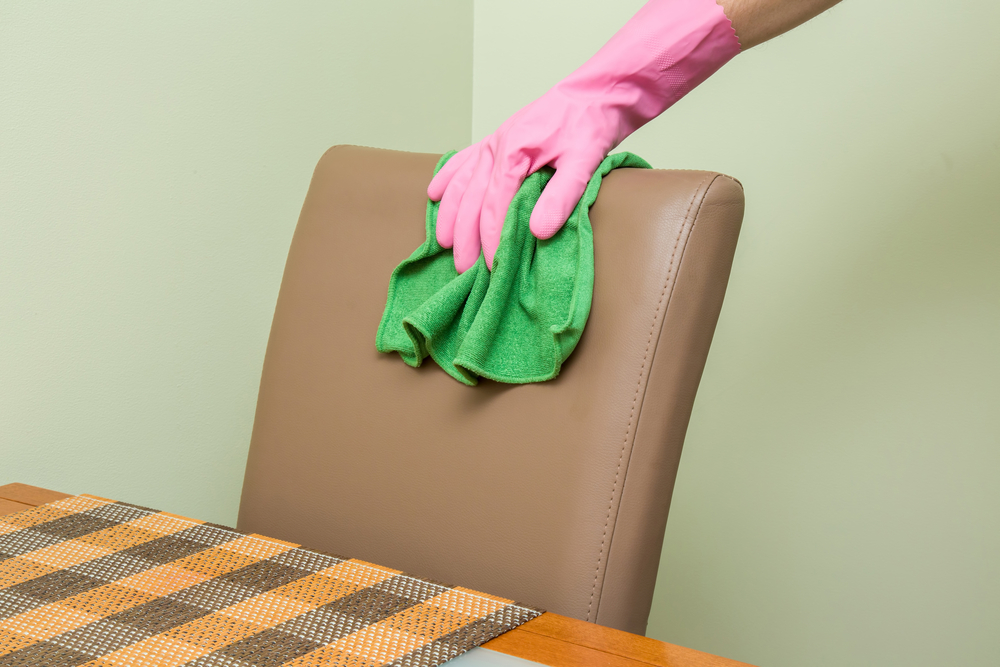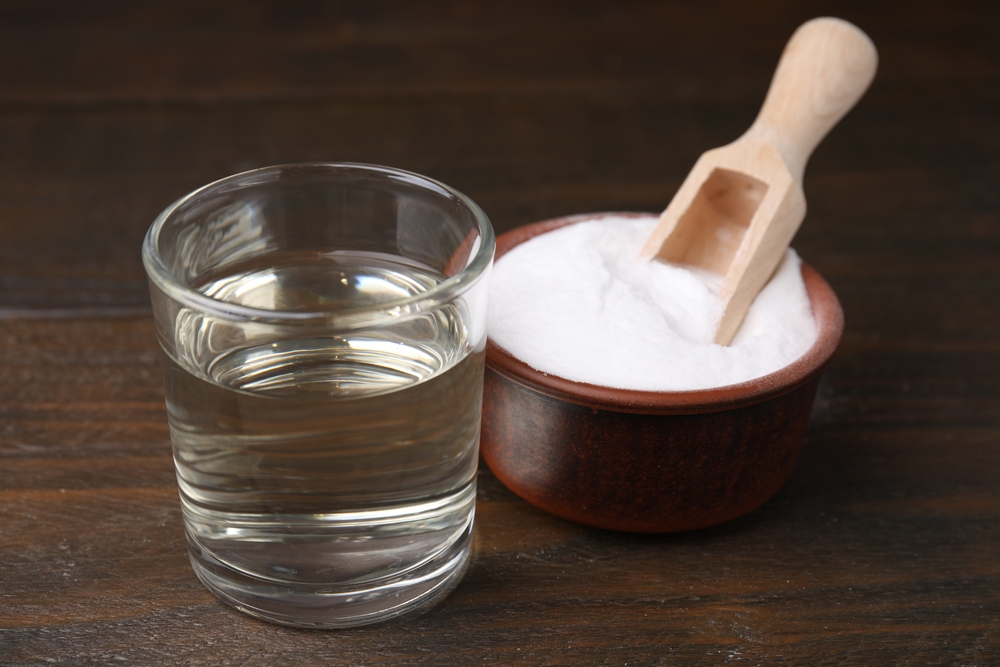As an Amazon Associate, I earn from qualifying purchases

Have you ever sat down in your favorite leather chair, only to cringe at the sight of a grimy headrest? You’re not alone. Whether you’re a meticulous homeowner, a busy office manager, or a DIY enthusiast, keeping leather furniture pristine can feel like a never-ending battle.
But what if I told you that restoring your leather chair’s headrest to its former glory doesn’t have to be a headache-inducing chore? From quick fixes to deep cleaning techniques, and natural solutions to commercial products, there’s a method that fits every need and budget.
Ready to transform your tired, stained leather headrests into spotless, inviting surfaces? Let’s dive into the world of leather care and discover how you can easily clean your chair’s headrest, saving time and money. Trust me, your neck (and your wallet) will thank you!
Keeping your leather chair’s headrest clean is essential for maintaining its appearance and longevity. To effectively clean the headrest of your leather chair, you’ll need a few key items: a leather cleaner, a
microfiber cloth, gentle soap, and a vinegar solution. Start by gently wiping the headrest with a dry microfiber cloth to remove any loose dust or debris. Next, apply a small amount of leather cleaner or a
mixture of gentle soap and water to another clean, damp microfiber cloth. Carefully work the cleaner into the leather using circular motions, paying extra attention to any visibly soiled areas. For stubborn stains, a
diluted vinegar solution can be effective but use it sparingly to avoid damaging the leather. After cleaning, wipe the headrest with a clean, damp cloth to remove any residue, and then dry it thoroughly
with a soft, dry cloth. Regular cleaning will help preserve your leather chair’s beauty and extend its lifespan.

How to Clean Headrest on Leather Chair: A Comprehensive Guide
Preparation and Assessment
Identifying the type of leather
Gathering necessary cleaning supplies
Spot-testing cleaning solutions
Cleaning Methods and Techniques
DIY Solutions
Mild soap and water mixture
Vinegar and water solution
Baking soda paste for tough stains
Commercial Cleaners
Selecting appropriate leather cleaners
How to use leather cleaning products effectively
Gentle Cleaning Techniques
Proper wiping and blotting methods
Using soft clothes and brushes
Avoiding excessive moisture
Addressing Common Challenges
Stain Removal
Oil and grease stains
Ink and dye transfer
Food and beverage spills
Dealing with Discoloration
Causes of leather discoloration
Gentle bleaching techniques
When to seek professional help
Preventing Leather Damage
Avoiding harsh chemicals
Protecting from direct sunlight
Proper drying techniques
Moisture Control
Removing excess water
Using leather conditioners
Maintaining optimal humidity levels
Preventive Care and Maintenance
Regular dusting and vacuuming
Applying leather protectants
Establishing a cleaning schedule
When to Seek Professional Cleaning Services
Signs of severe damage or wear
Antique or high-value leather furniture
Stubborn stains or extensive discoloration
How often should I clean the headrest on my leather chair?
Clean your leather chair headrest every 1-2 weeks for regular maintenance. Clean it immediately to prevent long-term damage if you notice visible dirt, oil stains, or sweat marks.
What’s the best way to remove oil stains from a leather headrest?
For oil stains, use a leather cleaner specifically designed for grease removal. Apply it to a microfiber cloth, not directly on the leather. Gently dab the stain, don’t rub. For stubborn stains, repeat the process or consult a professional.
Can I use household cleaners on my leather chair headrest?
Avoid using household cleaners, as they can damage the leather. Stick to products specifically formulated for leather. Always test any new product on a small, inconspicuous area first.
How do I clean sweat marks off my leather headrest?
For sweat marks, use a mild leather cleaner and a soft cloth. Gently wipe the area, then dry with a clean cloth. For persistent odors, use a leather deodorizer after cleaning.
What’s the proper way to clean food spills from a leather headrest?
A: For food spills, act quickly. Blot (don’t rub) the spill with a dry cloth to remove excess. Then, use a leather cleaner on a damp cloth to gently clean the area. Dry thoroughly with a clean cloth.
How can I remove makeup residue from my leather headrest?
For makeup stains, use a leather cleaner designed to remove cosmetics. Apply it to a soft cloth and gently dab the stain. Avoid rubbing, which can spread the stain. For stubborn marks, you may need to repeat the process.
What tools should I use to clean my leather chair headrest?
Use soft microfiber cloths for cleaning and drying. A soft-bristled brush can help with the gentle scrubbing of stubborn dirt. Avoid abrasive materials that could scratch the leather.
Should I condition my leather headrest after cleaning?
Yes, conditioning after cleaning helps maintain the leather’s softness and prevents cracking. Use a leather conditioner every 3-4 months, or more often if the leather feels dry.
How can I protect my leather headrest from future stains?
Apply a leather protector spray after cleaning and conditioning. This creates a barrier against stains and makes future cleaning easier. Reapply the protector every few months for the best results.
Can I steam clean my leather chair headrest?
Avoid steam-cleaning leather headrests. The heat and moisture can damage the leather, causing it to dry out, crack, or warp. Stick to gentle cleaning methods using appropriate leather care products.
Conclusion
As we’ve explored the intricacies of cleaning headrests on leather chairs, it’s clear that this task goes beyond mere aesthetics. The benefits of proper maintenance extend to hygiene, longevity, and overall chair value. While challenges exist, particularly in dealing with stubborn stains or delicate leather, the case studies we’ve examined demonstrate that with the right approach, these obstacles can be overcome.
Looking ahead, the importance of leather care in both personal and professional settings is likely to grow, especially as sustainability and long-term value become increasingly prioritized. By mastering these techniques, we not only preserve our investments but also contribute to a more sustainable approach to furniture care.
How might you apply these insights to enhance your own living or working space? Consider experimenting with the methods discussed, and don’t hesitate to share your experiences with colleagues or friends. Remember, the journey to expertise often begins with a single step or in this case, a single clean.
As an Amazon Associate, I earn from qualifying purchases